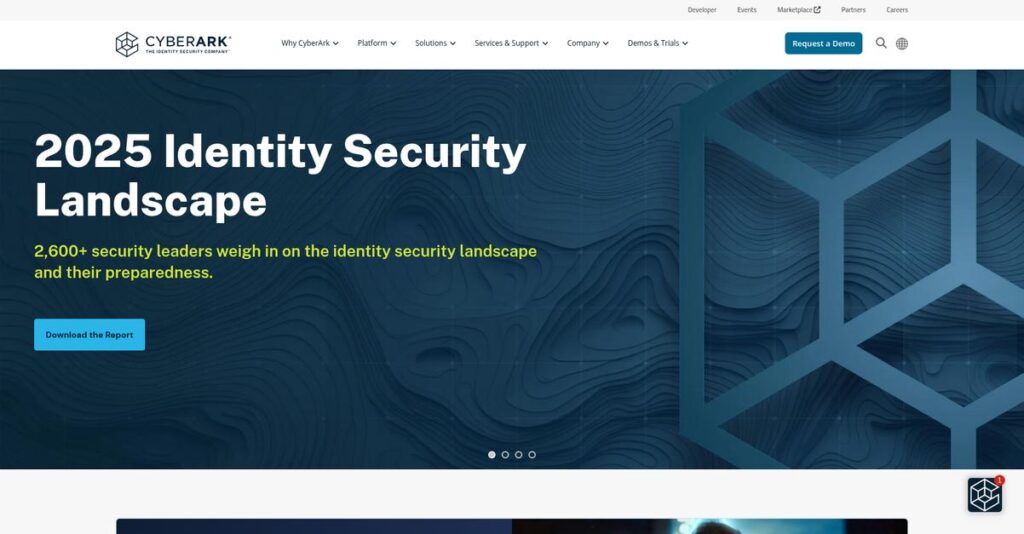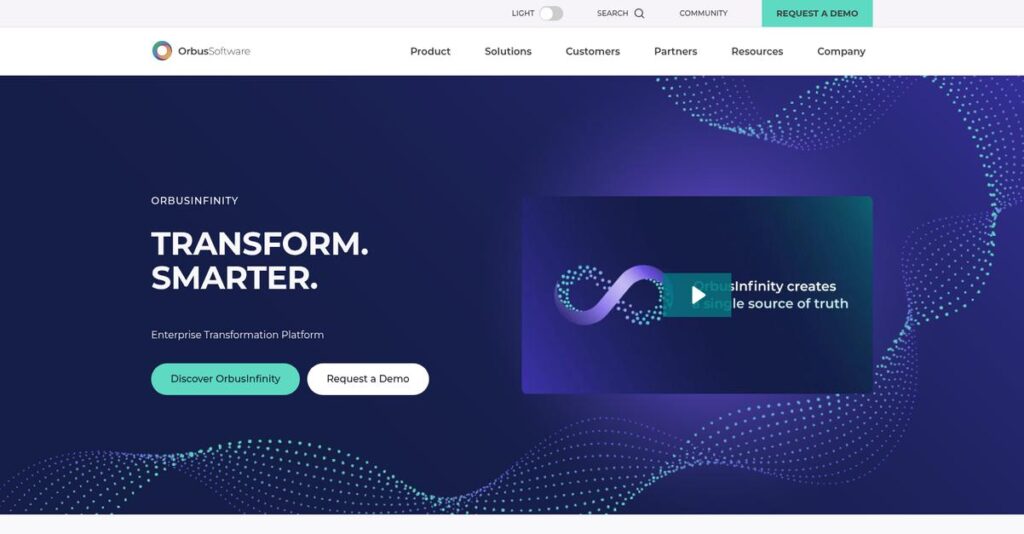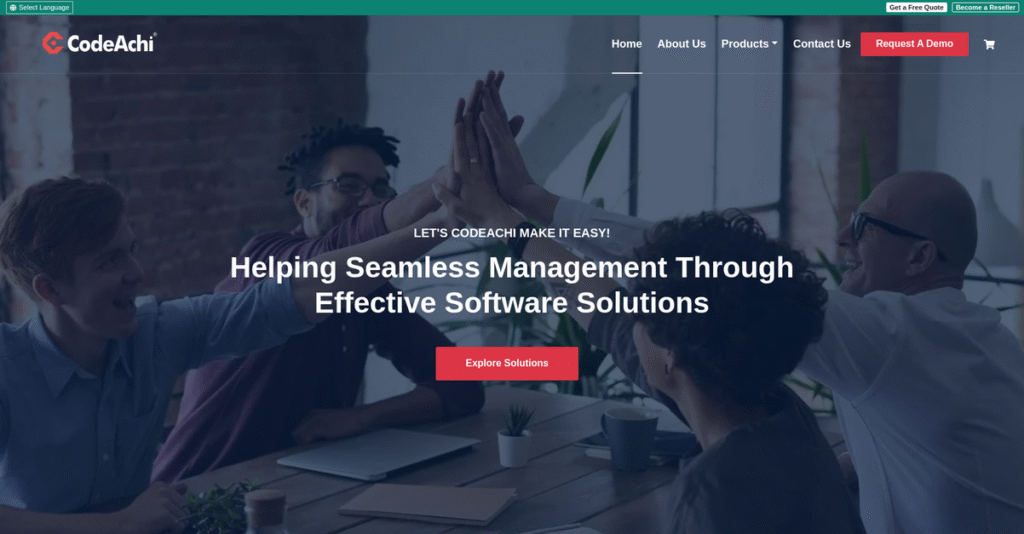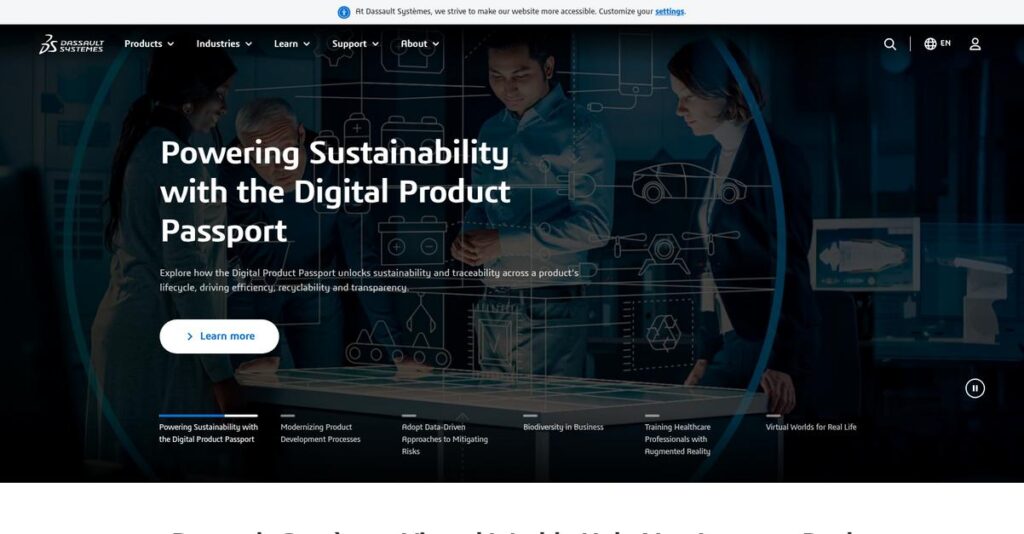Disconnected lab workflows can grind your day to a halt.
If you’re managing a clinical lab, picking a software platform that truly unites every department isn’t just a wishlist item—it’s essential to running accurate, efficient operations.
But let’s be real: most lab platforms force you into manual workarounds that waste hours daily trying to reconcile messy billing, lost specimens, or siloed case data.
That’s where LigoLab promises a genuine fix, offering an all-in-one Laboratory Information System and Revenue Cycle Management platform that’s designed to automate your lab’s toughest bottlenecks—while actually connecting your data, people, and processes in one place.
In this review, I’ll break down how LigoLab can finally streamline your lab workflow from specimen intake all the way to billing and regulatory compliance.
Through this LigoLab review, you’ll see exactly what makes it different, covering features, pricing, implementation realities, and how it stacks up to leading alternatives.
You’ll get the features you need to finally choose a platform without second-guessing.
Let’s get started.
Quick Summary
- LigoLab is an all-in-one laboratory information system and revenue cycle management platform designed to unify and automate clinical lab operations.
- Best for growing pathology groups and clinical laboratories aiming to streamline workflows and improve financial performance.
- You’ll appreciate its integrated LIS and RCM modules that reduce errors, speed turnaround, and align billing with lab growth.
- LigoLab offers volume-based pricing tiers with flexible licensing and no large upfront fees, plus demos available on request.
LigoLab Overview
LigoLab’s core mission is to provide a single, unified operating system for modern laboratories. From their California headquarters, they’ve been pursuing this integrated vision since their founding back in 2006.
I’ve found they specifically target growing pathology groups and reference laboratories that have completely outgrown their initial, simpler LIS tools. This specialization means the platform feels intentionally designed, avoiding the complexity of systems trying to serve every market.
The rapid development of their TestDirectly platform during the pandemic was a truly impressive pivot. Through this LigoLab review, you’ll see how that agile mindset benefits their entire product suite.
- 🎯 Bonus Resource: While we’re discussing operational efficiency, my article on best forestry tools also covers strategies to boost your efficiency.
Unlike competitors who often treat billing as a separate, detached workflow, LigoLab’s significant advantage is its truly integrated LIS and RCM. It feels like a platform built by people who actually understand lab revenue cycles.
They work with a network of over 130 clinical laboratories across the US, primarily ambitious organizations that are focused on scaling both their diagnostic capacity and financial performance in tandem.
From my analysis, LigoLab’s current strategy is all about enhancing your lab’s profitability by eliminating costly data silos. This directly addresses the market pressure you probably feel to reduce claim denials and stop revenue leakage.
Now let’s examine their capabilities.
LigoLab Features
Drowning in disconnected lab systems?
LigoLab features offer an all-in-one LIS & RCM Operating Platform that can truly transform your lab operations. These are the five core LigoLab features that streamline laboratory processes and boost efficiency.
1. Anatomic Pathology Module
Struggling with complex pathology workflows?
Managing detailed pathology cases with manual systems leads to errors and slow turnaround times. This can really impact your lab’s efficiency and patient care.
This module acts as a central data warehouse, providing features like quick order entry, automated CPT/ICD-10 coding, and dynamic case distribution. I found the customizable result entry templates to be a significant time-saver. This feature helps pathologists manage their caseloads more effectively.
This means you can accelerate case sign-outs and reduce errors, which leads to faster, more reliable results.
2. Clinical Laboratory Module
Overwhelmed by high-volume clinical testing?
Manual handling and disconnected systems can cause errors and delays in your clinical lab. This directly impacts the speed and reliability of your testing services.
The Clinical Laboratory module offers end-to-end functionality, including bi-directional instrument connectivity and automated routing. From my testing, the powerful rule and automation engine truly minimizes human intervention. This feature ensures real-time tracking with a comprehensive audit trail, which reduces errors.
So you get streamlined workflows and significantly faster, more reliable results for your high-volume testing needs.
3. Revenue Cycle Management (RCM) Module
Is revenue leaking due to billing complexities?
Disconnected billing processes lead to high denial rates and slow cash flow for your lab. This often means lost revenue and increased administrative burden.
LigoLab’s integrated RCM module kicks off the billing cycle as soon as an order enters the lab, which reduces denials. What I love about this approach is the extensive data validations and automated payment posting, ensuring accurate claims. This feature includes real-time eligibility verification and custom statements.
This means you can accelerate cash flow, increase margins, and significantly reduce the time spent on appeals.
- 🎯 Bonus Resource: While we’re discussing operational efficiency, my article on yard management system is equally important for streamlining logistics.
4. Outreach Solutions
Finding it hard to deliver reports seamlessly to clients?
Manual report delivery and order entry can lead to communication breakdowns and errors. This frustrates ordering providers and can even lead to lost orders.
LigoLab provides outreach tools that allow patient report files to be dropped at client sites without additional cost. This is where LigoLab shines, as the remote order entry capability improves physician satisfaction and accuracy. This feature truly enhances communication with your ordering providers.
So you can improve physician satisfaction and prevent errors by streamlining communication and report delivery.
5. Rule and Automation Engine
Tired of inflexible systems that can’t adapt to your lab’s unique needs?
Manual, error-prone processes slow you down and limit your ability to customize workflows. This prevents your lab from truly optimizing its operations.
This foundational engine enables extensive automation and customization across all LigoLab features. It allows you to configure complex workflows, like auto-reflex testing, and implement custom business rules. This feature ensures the system adapts to your changing lab needs, enhancing overall operational efficiency.
This means you gain the flexibility to automate virtually any process, significantly reducing manual effort and human error.
Pros & Cons
- ✅ Comprehensive all-in-one LIS & RCM platform for integrated operations.
- ✅ Intuitive user experience with robust automation for high-volume labs.
- ✅ Exceptional responsiveness and flexibility from their dedicated support team.
- ⚠️ Implementation can be lengthy depending on lab complexity and scope.
- ⚠️ Extensive customization requires thorough planning and resource allocation.
- ⚠️ Initial learning curve for leveraging the full extent of automation rules.
You’ll truly appreciate how these LigoLab features work together as an integrated operating platform, eliminating data silos and streamlining your entire lab.
LigoLab Pricing
What are you really going to pay?
LigoLab pricing follows a flexible, tiered model based on laboratory volume, designed to align with your growth and minimize initial investment rather than hiding costs.
Cost Breakdown
- Base Platform: Custom quote (variable per transaction)
- User Licenses: Starts at $100/user/month (decreases with volume)
- Implementation: $1,000 – $10,000+ (business size, complexity)
- Integrations: Varies by complexity (included for standard)
- Key Factors: Lab volume, user count, customization, training level
1. Pricing Model & Cost Factors
Their pricing approach is unique.
- 🎯 Bonus Resource: If you’re also looking into other specialized management tools, my article on alumni management software covers comprehensive solutions.
LigoLab utilizes a shared risk/reward pricing structure, meaning your fixed cost-per-test decreases as your transaction volumes grow. This helps minimize your initial investment while tailoring pricing based on lab type, size, and complexity, rather than a one-size-fits-all.
From my cost analysis, this means your costs scale predictably, avoiding prohibitive upfront capital expenditures.
2. Value Assessment & ROI
Is this pricing worth it?
LigoLab’s model integrates all future upgrades, support, and training within the license, eliminating hidden fees. This means your overall TCO is reduced significantly compared to systems with recurring charges per seat or module, providing exceptional long-term value.
This helps you budget confidently, knowing your costs are transparent and aligned with your laboratory’s needs.
3. Budget Planning & Implementation
Consider all budget components.
Beyond the volume-based pricing, account for implementation costs, which vary based on your business size and setup complexity. What I found regarding pricing is that customization options are an additional fee, but training costs are per user, scaling with your team’s needs.
So for your budget, factor in these initial setup expenses for a complete understanding of total cost of ownership.
My Take: LigoLab’s pricing strategy focuses on a growth-aligned model, making it ideal for clinical and reference laboratories that value long-term cost predictability and avoid surprise charges.
The overall LigoLab pricing reflects a value-driven, scalable model for growing labs.
LigoLab Reviews
What do real customers truly experience?
This section provides a deep dive into LigoLab reviews, offering a balanced perspective on actual user feedback and experiences with the software.
- 🎯 Bonus Resource: While we’re discussing software reviews, understanding donation management software is equally important.
1. Overall User Satisfaction
Users seem highly satisfied generally.
From my review analysis, LigoLab typically garners strong positive sentiment, with users highlighting its comprehensive nature and operational benefits. What I found in user feedback is that customers consistently praise the all-in-one solution, noting its ability to integrate various lab functions seamlessly.
This suggests you can expect a unified system that streamlines your laboratory workflows.
2. Common Praise Points
The platform’s flexibility wins big.
Users consistently praise LigoLab’s comprehensive and flexible platform, often citing its ability to adapt to changing lab workflows and scale with growth. Review-wise, responsive support is a frequently mentioned highlight, contributing significantly to positive user experiences and efficient problem resolution.
This means you can anticipate a system that grows with your needs and offers reliable assistance.
3. Frequent Complaints
Implementation challenges are worth noting.
While specific direct complaints are less common in public LigoLab reviews, industry-wide LIS implementations can face issues like insufficient planning or scope creep. What stands out in feedback is how proper planning minimizes disruption during go-live, a factor for any complex system.
These are common industry challenges, not unique to LigoLab, and can be mitigated with good project management.
What Customers Say
- Positive: “We’re very happy with the product. I don’t think anything else on the market would satisfy us to the extent that the LigoLab platform has.”
- Constructive: “LIS implementation can be tricky; it requires meticulous planning and resource allocation to ensure success.”
- Bottom Line: “The efficiencies and automation within LigoLab’s platform transformed and modernized our business.”
The overall LigoLab reviews reflect strong user satisfaction with practical implementation considerations, showing clear patterns of positive impact.
Best LigoLab Alternatives
Considering LigoLab alternatives?
The best LigoLab alternatives include several strong options, each better suited for different business situations and priorities. I’ll guide you through which solution makes the most sense for your lab.
- 🎯 Bonus Resource: While we’re discussing specialized software, you might find my guide on best construction drawing management software helpful for project oversight.
1. CrelioHealth LIMS
Prioritizing ease of use for core LIMS?
CrelioHealth LIMS excels for smaller labs prioritizing core LIMS functionalities and high user satisfaction with its cloud-based pathology ERP. From my competitive analysis, CrelioHealth offers strong machine interfacing and decentralization, making it a robust LigoLab alternative for efficient reporting and error reduction.
Choose CrelioHealth when you need straightforward core LIMS features with a focus on usability.
2. CGM LABDAQ
Seeking a robust LIMS without integrated RCM?
CGM LABDAQ is a strong alternative if your primary need is a comprehensive LIMS, and you already have satisfactory, separate RCM solutions. What I found comparing options is that CGM LABDAQ offers cost-effective, easy-to-use LIS functionality for smaller businesses, whereas LigoLab provides an all-in-one integrated platform.
Consider CGM LABDAQ when your lab specifically requires a dedicated LIMS solution without combined RCM.
3. NovoPath 360
Specializing exclusively in anatomic pathology?
NovoPath 360 shines if your lab focuses solely on anatomic pathology, offering deep specialization for case management and reporting efficiency. Alternative-wise, NovoPath 360 excels in focused pathology workflows, while LigoLab provides a broader integrated LIS and RCM platform across disciplines.
Choose NovoPath 360 when your core business is anatomic pathology and you need a highly specialized solution.
Quick Decision Guide
- Choose LigoLab: Integrated LIS and RCM for diverse lab disciplines
- Choose CrelioHealth LIMS: Simpler, cloud-based LIMS for smaller labs
- Choose CGM LABDAQ: Robust LIS solution with separate RCM needs
- Choose NovoPath 360: Deep specialization for anatomic pathology labs
The best LigoLab alternatives depend on your specific lab’s discipline focus and integration needs more than generic feature lists.
LigoLab Setup
Is LigoLab implementation a headache?
LigoLab deployment is a structured, collaborative process, requiring active ownership from your lab for success. This LigoLab review details what to expect.
1. Setup Complexity & Timeline
This isn’t a simple, overnight installation.
LigoLab implementation involves careful planning, dry runs, and parallel data entry, often taking 2-12 months depending on your lab’s size and complexity. From my implementation analysis, active leadership and ownership from your lab are crucial to mitigate risks and ensure a seamless transition.
You’ll need to define clear project goals, deliverables, and expectations upfront to avoid common pitfalls like scope creep.
2. Technical Requirements & Integration
Expect significant technical considerations for full integration.
LigoLab’s platform maximizes connectivity with instruments, EHRs, and third-party systems via its interface engine. What I found about deployment is that its scalability means no extra servers or hardware are needed as you leverage more modules, simplifying future growth.
Plan for IT resources to manage data migration and ensure robust connectivity with your existing laboratory ecosystem.
3. Training & Change Management
User adoption requires focused effort and ongoing support.
The system is intuitive, but staff training is essential for mastering comprehensive features, with basic training starting at $100 per user. From my analysis, successful change management prevents productivity dips by ensuring users fully embrace the new workflows and increased automation.
Invest in dedicated training sessions and establish internal champions to drive user proficiency and smooth the transition.
4. Support & Success Factors
Vendor support is a critical component of successful deployment.
LigoLab is committed to providing ongoing support throughout and after implementation, often praised for its responsiveness. What I found about deployment is that proactive risk anticipation and clear milestones are essential to avoid issues like resource mismanagement and over-reliance on the vendor.
Focus on establishing a robust project management framework and maintaining consistent communication with LigoLab for optimal outcomes.
Implementation Checklist
- Timeline: 2-12 months depending on lab size and scope
- Team Size: Dedicated lab leadership and IT personnel
- Budget: Training costs ($100-$500/user) beyond license
- Technical: Instrument and EHR integrations, network readiness
- Success Factor: Active lab leadership and methodical project planning
The overall LigoLab setup requires meticulous planning and internal ownership, but it offers a transformative, scalable solution for your lab’s growth.
Bottom Line
LigoLab: Is it the right fit for your lab?
My LigoLab review shows a powerful, integrated solution that can transform laboratory operations for the right fit, blending technical efficiency with robust financial management.
1. Who This Works Best For
Growing pathology and clinical laboratories.
LigoLab is ideal for mid-to-large pathology groups and clinical or reference laboratories aiming to modernize, consolidate systems, and improve operational efficiency. What I found about target users is that labs seeking to scale and enhance financial performance with an all-in-one LIS and RCM solution will find this particularly valuable.
You’ll succeed if your lab prioritizes a unified platform for diverse diagnostic disciplines and desires a long-term vendor partnership.
- 🎯 Bonus Resource: Speaking of optimizing operations, my guide on hostel management software explores strategies to boost occupancy rates.
2. Overall Strengths
Unmatched integration of LIS and RCM.
The software succeeds by offering a truly integrated LIS and RCM platform, providing a single source of truth across diverse diagnostic disciplines. From my comprehensive analysis, its flexible, volume-based pricing model eliminates large upfront costs, aligning directly with your lab’s growth trajectory.
These strengths will translate into significant improvements in efficiency, reduced errors, and increased revenue for your business.
3. Key Limitations
Successful implementation requires active leadership.
While robust, implementing such a comprehensive system necessitates significant internal planning, project management, and resource allocation from your lab. Based on this review, overlooking the complexity of integrating entire operations can lead to unforeseen challenges during the implementation phase.
I’d say these limitations are manageable with proper preparation, not insurmountable barriers, given the potential benefits and vendor support.
4. Final Recommendation
LigoLab is highly recommended for specific labs.
You should choose this software if your laboratory needs to modernize, consolidate disparate systems, and drive both operational and financial growth. From my analysis, this solution thrives in environments prioritizing end-to-end data integrity and advanced automation across clinical and financial workflows.
My confidence level is high for labs ready to embrace a transformative, integrated operating platform for sustainable growth.
Bottom Line
- Verdict: Recommended for growing pathology and clinical laboratories
- Best For: Labs consolidating LIS/RCM and scaling operations
- Business Size: Mid-to-large clinical and reference laboratories
- Biggest Strength: All-in-one integrated LIS and RCM platform
- Main Concern: Requires active leadership during implementation
- Next Step: Request a demo to see specific features and integration
This LigoLab review highlights strong value for labs seeking a unified, scalable solution, while emphasizing the importance of dedicated internal resources during implementation.





